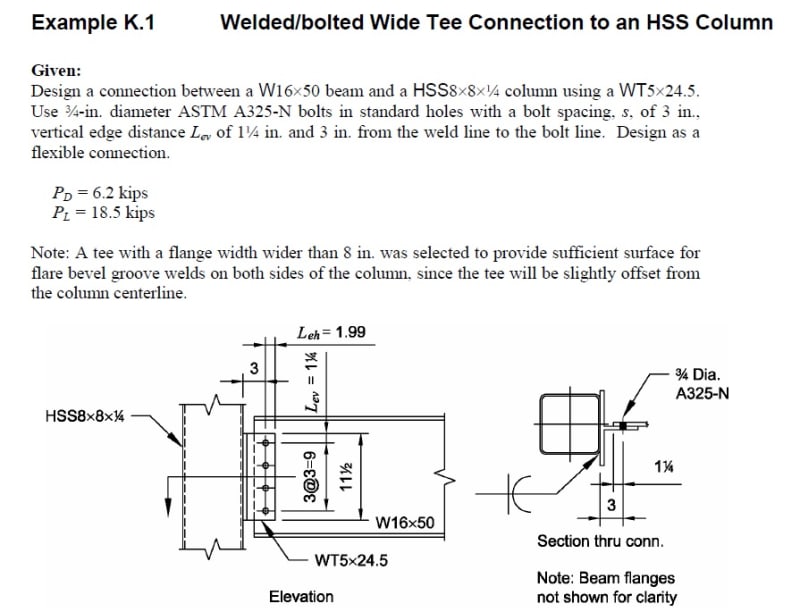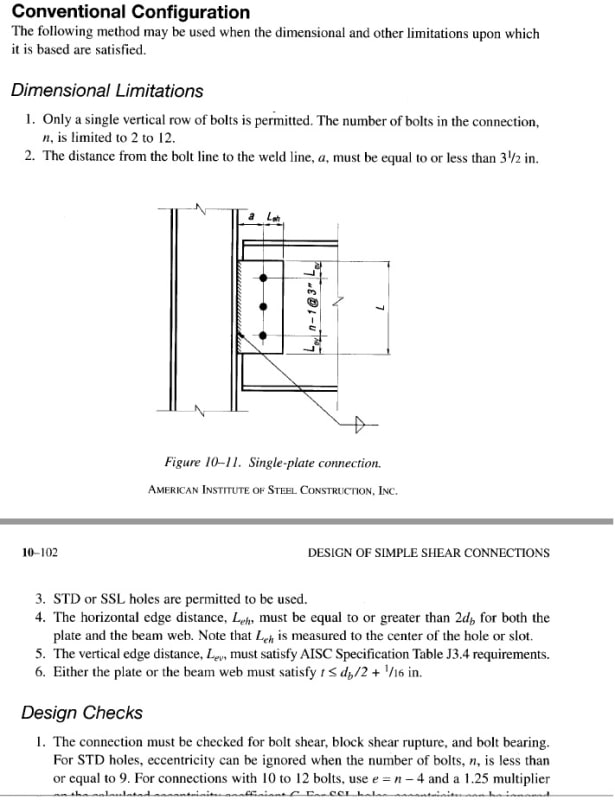wrxsti
Structural
- Sep 18, 2020
- 196
In AISC Design Example K.1 - Welded bolted wide tee to hss column
Wide Tee welded to column and bolted into a W section.

For bolt capacity they use eccentricity

The configuration resembles a conventional configuration for single shear plates
however for conventional configuration on single shear plates eccentricity can be ignored.

Wide Tee welded to column and bolted into a W section.

For bolt capacity they use eccentricity

The configuration resembles a conventional configuration for single shear plates
however for conventional configuration on single shear plates eccentricity can be ignored.




![[bigsmile] [bigsmile] [bigsmile]](/data/assets/smilies/bigsmile.gif)